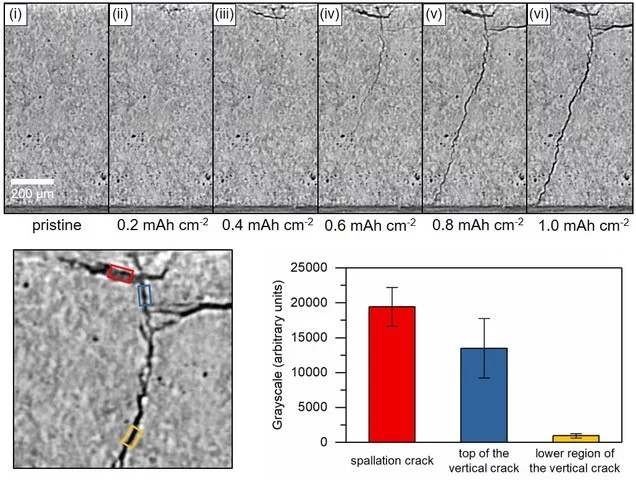To improve electric vehicle (EV) battery range and safety, new battery technologies that go “beyond lithium ion” are needed. Solid-state batteries (SSBs) promise such improvements, but mass market adoption has been held back by several challenges that cause the battery to fail when charged and discharged.
SSBs can short circuit after repeating charging and discharging. Two well-recognized causes of battery failure are the growth of dendrites, branching networks of lithium that grow through the solid electrolyte during charging of a battery, and void creation, pores that reduce the area of contact between the electrolyte and negative electrode. Solving these two challenges could potentially usher in a new era of SSB-powered EVs.
Researchers from the University of Oxford, the Diamond Light Source and the Paul Scherrer Institut have generated strong evidence supporting one of two competing theories regarding the mechanism by which lithium metal dendrites grow through ceramic electrolytes. A process leading to short circuit at high rates of charge. The X-ray phase-contrast imaging capabilities of the TOMCAT beamline of the Swiss light source allowed researchers to visualize and characterize the growth of cracks and dendrites deep within an operating solid-state battery. The results were published in Nature Materials on April 22, 2021.

Original Publication
Visualizing plating-induced cracking in lithium-anode solid-electrolyte cells, Ziyang Ning, Dominic Spencer Jolly, Guanchen Li, Robin De Meyere, Shengda D. Pu, Yang Chen, Jitti Kasemchainan, Johannes Ihli, Chen Gong, Boyang Liu, Dominic L. R. Melvin, Anne Bonnin, Oxana Magdysyuk, Paul Adamson, Gareth O. Hartley, Charles W. Monroe, T. James Marrow & Peter G. Bruce. Nat. Mater. (2021).